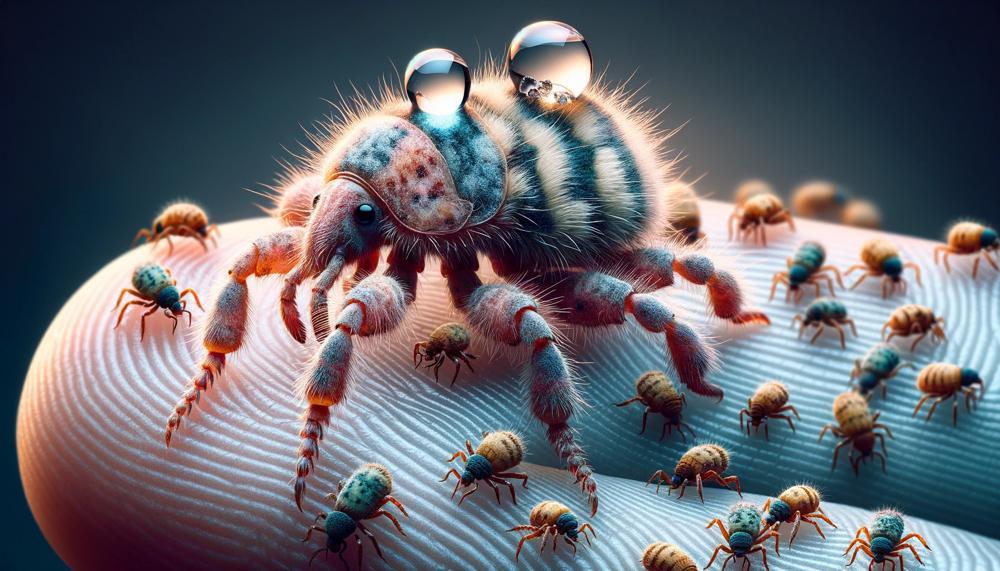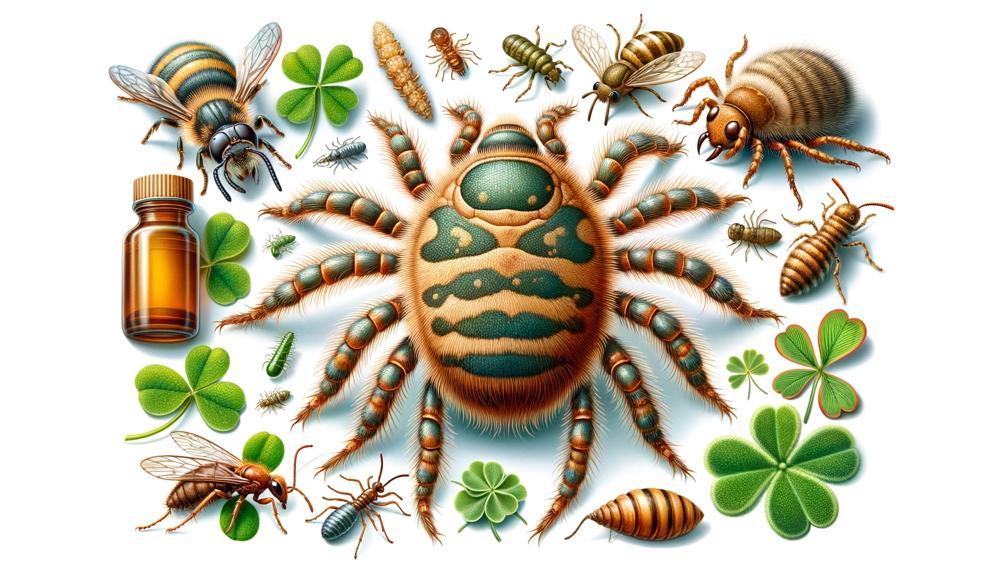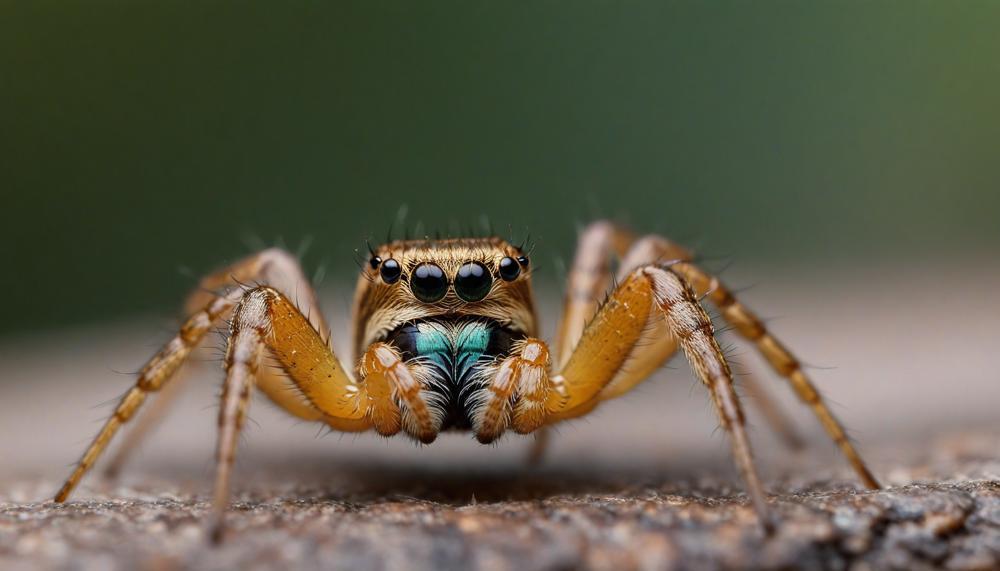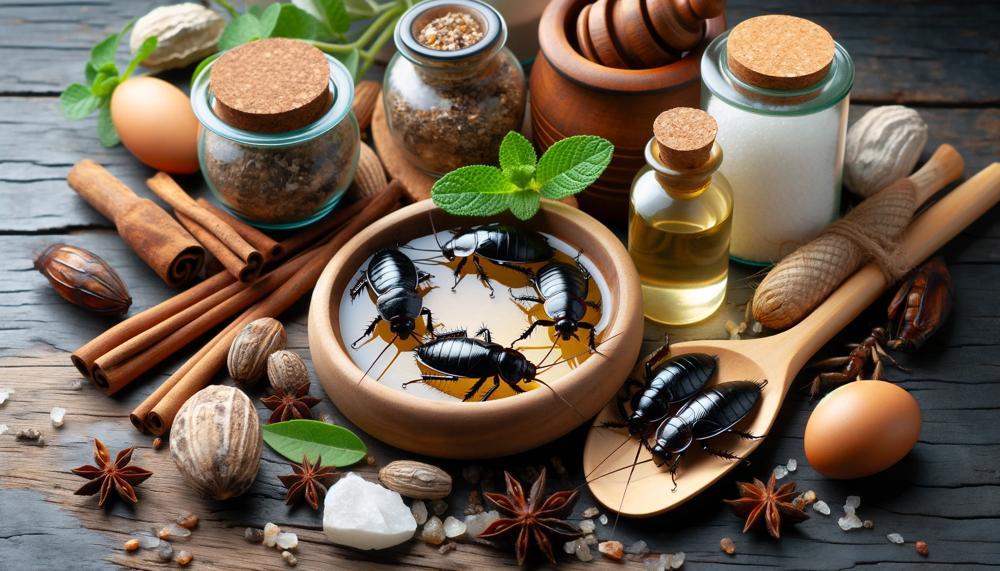Do you know that one clover mite, which is very small and hard to see, can quickly spread to thousands of other mites in your home or garden? These tiny red bugs aren’t dangerous to people or animals, but they can be very annoying as they swarm over walls, windows, and furniture, leaving dirty red spots where they land.
You can fight clover mites with natural, eco-friendly methods that will keep you calm and protect your home and garden’s health.
So, how do you get rid of clover mites naturally?
Here are some natural ways to get rid of clover mites:
- Dust: Put a thin layer of dust, like diatomaceous earth, baking soda, or talc, around cracks, windows, and other places clover mites could get in. The powder will cover the mites and make it hard for them to move around and find food.
- Vinegar or dish soap: In a spray bottle, mix white vinegar or dish soap with water. Then, spray the mixture directly on places that have clover mites. To keep the red color of the clover bugs from ruining your home, use a cleaner to get rid of them before using this mixture inside.
- Trim and water your lawn: Keeping your grass short and well-watered is a good way to keep mite groups away. But be careful not to water too much, as this will attract more pests.
- Support your plants: By supporting your plants, you allow nature to take its course. Common natural mite predators include big-eyed bugs, minute pirate bugs and other mites.
So, let’s get started.
Table of Contents
Getting to Know Clover Mites
| Entry Points | Reasons for Entry | Preventive Measures |
| Windowsills and doors | Seeking warmth or escaping wet conditions | Seal gaps and cracks; Use weather stripping |
| Cracks in walls or foundations | Moving towards the interior in search of food or habitat | Apply silicone-based caulk to seal openings |
| Ventilation systems | Accidental entry while exploring or following air currents | Install fine mesh screens on vents |
Clover mites enter homes through incredibly small gaps around windows, doors, and even through cracks in walls and foundation. Their quest for new habitats or escape from adverse weather conditions drives them indoors. Inside, they do not pose a risk to human health as they do not bite or transmit diseases, nor do they cause damage to household structures or furniture.
However, their sheer numbers can be a nuisance, and when squashed, they leave behind a reddish stain due to their body pigments.
To avoid an infestation, it’s crucial to maintain a well-groomed garden by regularly mowing the lawn, removing weeds, and trimming plants away from the house’s perimeter. Utilising natural repellents like essential oils (peppermint, cinnamon, and clove) and employing physical barriers such as diatomaceous earth can deter these mites from entering homes.
How Long Does a Clover Mite Infestation Last?
Generally, if left unchecked outdoors, these tiny critters might revel in their habitat for the entire spring season. However, when they venture indoors, their stay is markedly short-lived, often not surviving beyond a few days due to the lack of their primary food source: plants.
To tackle a clover mite invasion naturally, there’s a slew of handy strategies one can employ. Below is a table detailing effective natural remedies and preventive measures:
| Method | Description | Effectiveness |
| Water Flush | Gently washing down infested areas with water to physically remove mites. | Immediate but temporary relief. |
| Neem Oil | An all-natural pesticide that disrupts the life cycle of mites without harming plants. | High, with regular application. |
| Barrier Zones | Creating a perimeter around the home with pea gravel or similar materials to deter entry. | Moderately effective as a long-term prevention strategy. |
| Seal Entry Points | Filling gaps and cracks in the home’s exterior to prevent indoor migration. | Highly effective when combined with other methods. |
| Natural Repellents | Using essential oils or diatomaceous earth as deterrents in gardens and entry points. | Varies; consistent application needed for best results. |
By integrating these natural tactics, one can significantly reduce the duration and impact of a clover mite infestation. Remember, the key is not just to eradicate the current invaders but to make your space less inviting for their return.
Regular maintenance of your garden or lawn, along with strategic planting and diligent sealing of your home, can create an unwelcome environment for clover mites.
Getting Rid of Clover Mites
Here, we unfold an assortment of methods that are not only gentle on the environment but also your pocket. Let’s dive into the details:
| Method | Description | How it Works |
| Vacuuming | An immediate solution to capture mites. | Sucks up mites and eggs from surfaces, preventing them from proliferating. |
| Soap and Water Mixture | A concoction of dish soap diluted in water. | Removes mites on contact and creates a repellent barrier against future infestations. |
| Pea Gravel Barrier | A perimeter of pea gravel around the home. | Prevents mites from entering by creating a physical barrier they cannot cross. |
| Diatomaceous Earth | A fine powder made from fossilized algae. | Lethal to mites but safe for humans and pets; dehydrates mites on contact. |
| Boric Acid Solution | A mix of boric acid and water sprayed around the home. | Kills and repels mites effectively without harming the environment. |
| Sticky Traps | Traps designed to catch insects and mites. | Captures mites as they attempt to crawl over surfaces, reducing their numbers. |
How to Keep Clover Mites Away
| Natural Substance | Application Method | Effectiveness |
| Diatomaceous Earth | Scatter around the home’s perimeter, focusing on entry points. | Kills by dehydration upon contact. |
| Essential Oils (Peppermint) | Mix with water in a spray bottle and spritz around potential entry points. | Repels mites with its potent scent. |
| Regular Garden Maintenance | Mow lawns, trim bushes, and clear debris. | Reduces habitat for mites, lessening their numbers. |
| Citrus Peels (Orange/Lemon) | Place peels near entry points or areas of mite activity. | The acidity acts as a natural deterrent. |
| Sealing Cracks and Gaps | Use caulk or weather stripping on walls, windows, and doors. | Prevents entry by sealing potential access points. |

Implementing these methods not only keeps your abode free from clover mites but also ensures a chemical-free environment conducive to health.
Conclusion
By using natural methods, we can fight clover mites in our fields and homes in a way that is successful and doesn’t hurt the environment.
Our plans are based on knowing what clover mites like and how to keep them out. For example, we seal the tiny holes that these red pests use to get in and use natural repellents like essential oils and diatomaceous earth. By using these ideas to make places less appealing to them, we can use nature to keep our homes calm and free of stains.
The article gives useful do-it-yourself ideas that are also good for the environment and your pocket. By focusing on avoidance through proper yard care and smart barriers, we get to the root of the problem and keep these tiny pests away.
With these tips, we can keep clover mites out of our homes and fields, keeping them clean and free of their harmful effects.





